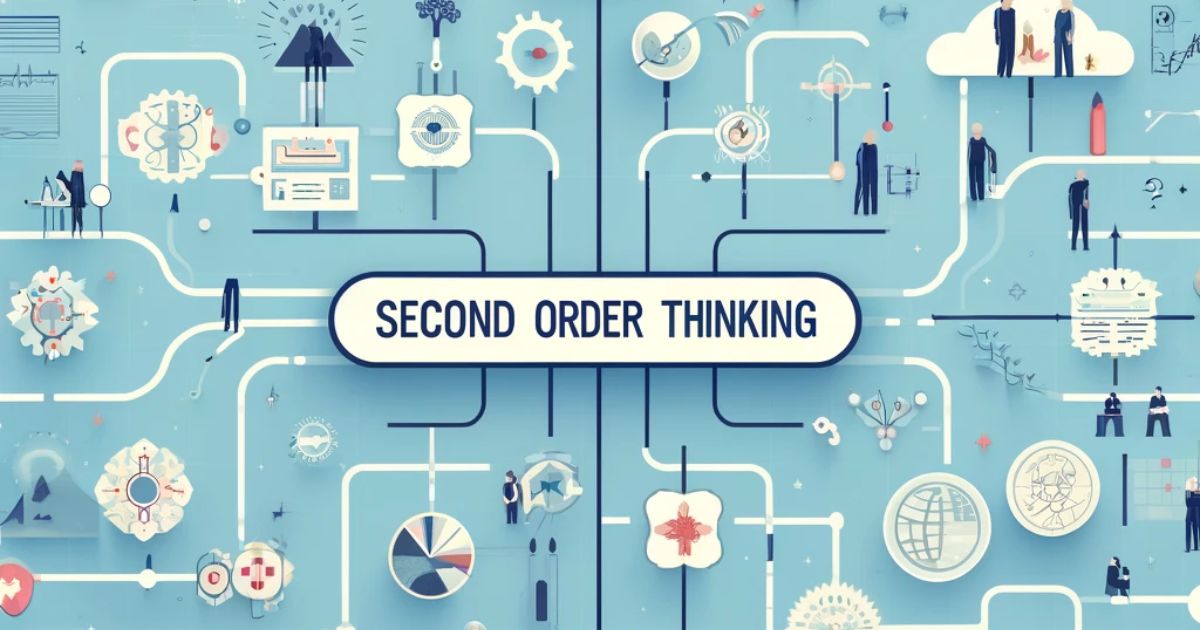二阶思维(Second Order Thinking)是指考虑决策和行动的长期后果及连锁反应的过程。它不仅关注即时和显而易见的结果(一级效应),还要理解随时间推移可能产生的更复杂且通常不太明显的影响(二级效应)。这种思维方式对于做出明智的决策至关重要,因为它有助于预见潜在的意外后果,并权衡行为的更广泛影响。
二阶思维的关键方面:
- 长期视角:考虑决策对未来的影响,而不仅仅是当下。
- 多重后果:识别和分析决策可能引发的一系列事件。
- 系统思维:理解系统内不同元素如何相互作用和影响。
- 避免短期主义:抵制仅关注即时利益而忽视潜在长期成本的诱惑。
- 战略规划:利用二阶思维的洞见制定稳健且可持续的策略。
示例:
一级思维:一家公司决定通过裁员来削减成本。直接好处是减少开支。
二阶思维:公司考虑裁员的潜在长期影响,如员工士气低落、知识流失、生产力下降、公众形象负面以及市场改善时重新招聘熟练工人的难度。
通过二阶思维,公司可能会探索减少这些长期风险的替代节省成本措施,如减少非必要开支、提高运营效率或实施临时降薪。
重要性:
- 风险管理:帮助识别潜在风险并在它们变成问题之前进行缓解。
- 可持续决策:鼓励做出对长期有益的决策,而不仅是眼前。
- 竞争优势:运用二阶思维的组织和个人通常可以预见他人可能忽略的机会和威胁。
总之,二阶思维对于任何参与决策的人来说都是一项关键技能,因为它确保了更全面和前瞻性的问题解决和策略制定方法。
Second Order Thinking refers to the process of considering the long-term consequences and ripple effects of decisions and actions. It involves looking beyond the immediate and obvious outcomes (first-order effects) to understand the more complex and often less apparent impacts that may arise over time (second-order effects). This type of thinking is crucial for making well-informed decisions, as it helps to anticipate potential unintended consequences and weigh the broader implications of one’s actions.
Key Aspects of Second Order Thinking:
- Long-Term Perspective: Considering how decisions will impact the future, not just the present.
- Multiple Consequences: Identifying and analyzing the chain of events that a decision might trigger.
- Systems Thinking: Understanding how different elements within a system interact and influence each other.
- Avoiding Short-Termism: Resisting the temptation to focus solely on immediate benefits while ignoring potential long-term costs.
- Strategic Planning: Using insights from second-order thinking to develop strategies that are robust and sustainable.
Example:
First-Order Thinking: A company decides to cut costs by laying off a significant portion of its workforce. The immediate benefit is reduced expenses.
Second-Order Thinking: The company considers the potential long-term impacts of layoffs, such as reduced employee morale, loss of institutional knowledge, decreased productivity, negative public perception, and potential difficulties in rehiring skilled workers when the market improves.
By engaging in second-order thinking, the company might explore alternative cost-saving measures that mitigate these long-term risks, such as reducing non-essential expenditures, improving operational efficiencies, or implementing temporary pay cuts.
Importance:
- Risk Management: Helps in identifying potential risks and mitigating them before they become problematic.
- Sustainable Decision-Making: Encourages decisions that are beneficial in the long run, not just immediately.
- Competitive Advantage: Organizations and individuals who practice second-order thinking can often foresee opportunities and threats that others might miss.
In summary, second-order thinking is a critical skill for anyone involved in decision-making, as it ensures a more comprehensive and foresighted approach to problem-solving and strategy development.
